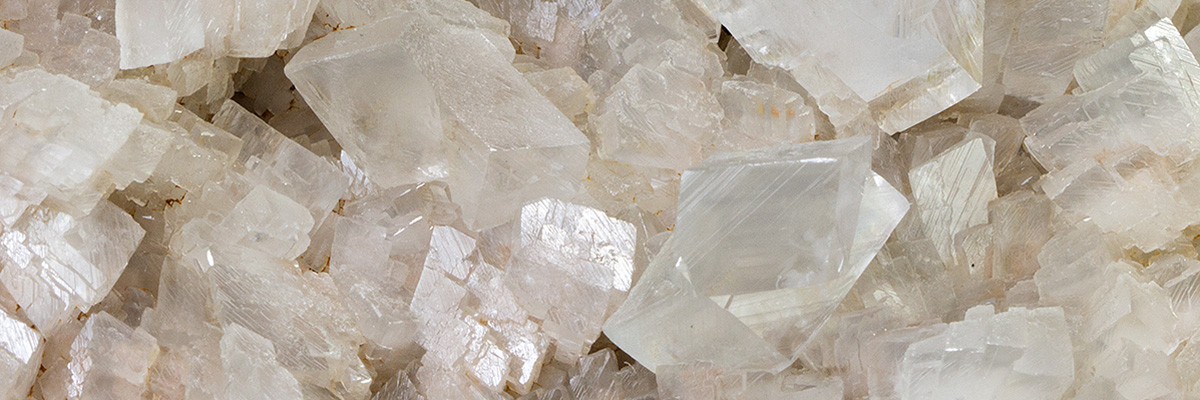Dolomite is a carbonate mineral that belongs to the anhydrous carbonate subclass within the trigonal crystal system. Named after French mineralogist Déodat Gratet de Dolomieu, dolomite is characterized by its pearly to vitreous luster, pale to dark shades of pink, gray, or white colors, and a well-formed rhombohedral crystal habit. It can also exhibit granular or massive forms and possesses perfect cleavage in three directions, forming characteristic rhombohedra.
Usage
Dolomite is primarily utilized as a source of magnesium and calcium, which are essential elements in agricultural, environmental, and industrial applications. Dolomite is used as a soil conditioner in agriculture, as a flux in the production of steel and iron, and in the manufacturing of cement and concrete. Additionally, the mineral is used in the production of glass and ceramics, as well as a filler in the paint, rubber, and plastic industries.
Gemstone
While dolomite is not generally considered a traditional gemstone, it is sometimes used in decorative items and ornamental carvings. Its pale pink to gray coloration and pearly luster can lend an attractive appearance to these applications. However, due to its relatively low hardness and perfect cleavage, dolomite is not suitable for most jewelry applications and requires careful handling to maintain its appearance.
Origin
Dolomite forms in nature through a variety of geological processes, including the alteration of limestone by magnesium-rich fluids, the precipitation of calcium and magnesium carbonate from water in marine and freshwater environments, and the metamorphism of calcium-rich rocks. The formation of dolomite can occur through direct precipitation or through the replacement of pre-existing calcite in limestone.
Occurrence
Dolomite is commonly found in sedimentary rocks, especially in dolostone, a rock composed mainly of dolomite. The mineral can also be found in marble, a metamorphic rock that forms from the recrystallization of carbonate minerals such as calcite and dolomite. Dolomite deposits are widespread and can be found in many regions across the world, including the United States, Mexico, Brazil, and parts of Europe and Asia.
Metaphysical
In metaphysical and spiritual practices, dolomite is believed to possess a range of properties related to emotional healing, stress relief, and grounding. The mineral is said to help individuals release negative emotions, promote a sense of stability and balance, and encourage self-compassion. Dolomite is also considered a grounding stone, helping to connect individuals to the earth’s energies and providing a sense of stability in times of change. Additionally, the mineral is believed to enhance mental focus and creativity.
| Class | Carbonates |
| Formula | CaMg(CO3)2 |
| Luster | Pearly to vitreous |
| Hardness (Mohs) | 3.5 – 4 |
| Streak | White |
| Color | Colorless, white, gray, pink, green, brown |
| Cleavage | Perfect in three directions |
| Specific Gravity | 2.8 – 2.9 |


